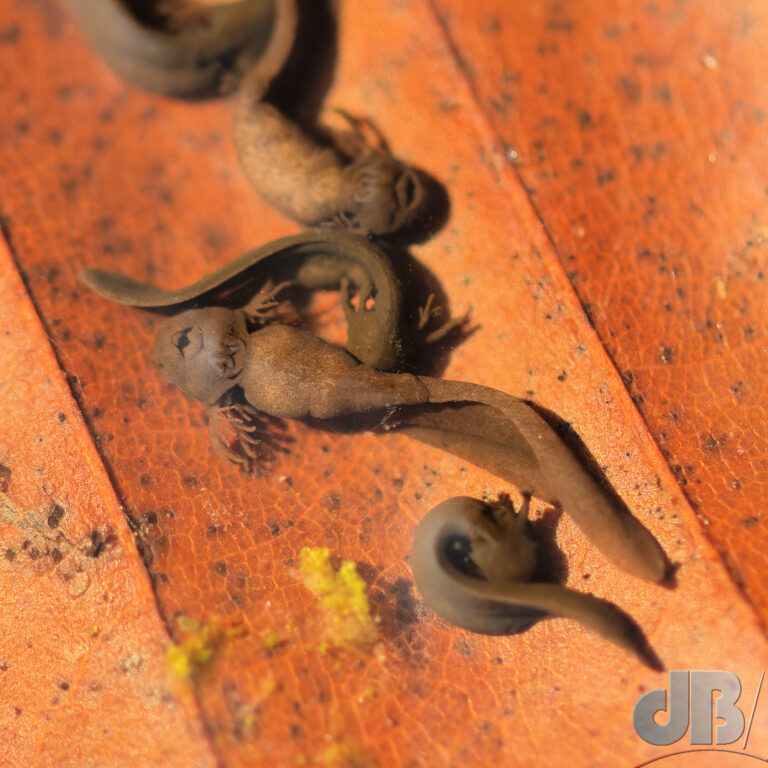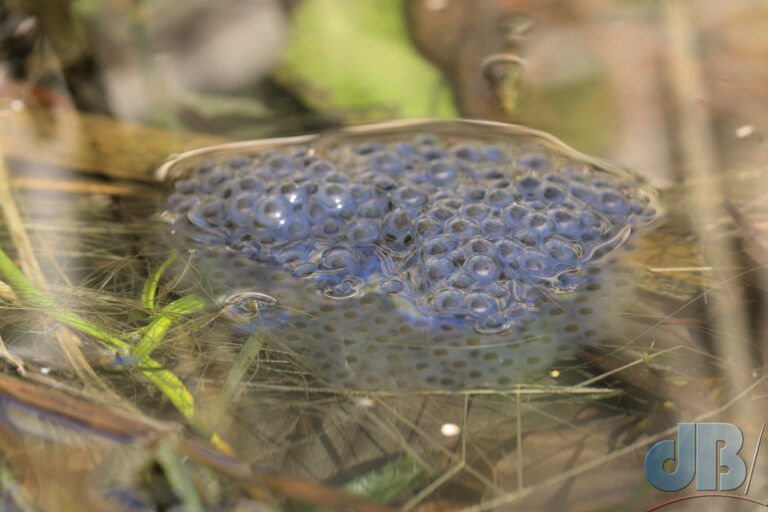UPDATE: 20th March 2025 Tadpoles emerging from spawn and by 25th hundreds flicking and twisting about in the pond with their external gills flapping.

UPDATE: 6th March 2025. There was a lot of movement in the pond during the day of 5th March (frog count a couple of nights ago was about 15). By morning of 6th, two small dollops of frogspawn.

UPDATE: 26th February 2025 – Couple of nights ago, at least seven or eight frogs in the pond. Heavy rain today, hoping to see spawn soon.
UPDATE: 22nd Feb 2024 – Spawn present in the morning, perhaps been there a day or two, it’s been raining heavily so hadn’t checked since the weekend.
UPDATE: 9th May 2023. Still lots of very active tadpoles but no sign yet of metamorphosis beginning in any of them.
UPDATE: 25th March 2023, lots of tadpoles have now hatched, as of 19th April they are big but not yet showing signs of metamorphosis.
TL:DR – It’s 2023. Once again we had frogs, then frogspawn, and then tadpoles in our garden wildlife pond.
Son reported from our garden pond #PondLife on 11th March 2023 that there were at least a couple of dozen frogs visible in the pond mating and spawning. First dollop of spawn was seen on this date. He counted at least 30 frogs. I got a bit of video of the activity a day later in the rain. I will try and do better if it is dry this evening. The video was done as more of a hasty record of the sound of the frogs croaking.
To provide a little extra information I asked ChatGPT to act as a herpetologist and to tell me more about the Common Frog, Rana temporaria. This is what had to say, mildly edited:
The Common Frog is a type of amphibian, which means that it spends part of its life in water and part of its life on land. In the spring, adult frogs migrate to breeding ponds where they mate and lay eggs, spawning. The tadpoles hatch from the eggs and spend several months in the pond before metamorphosing into juvenile frogs and leaving the water to live on land.
If you have a garden pond, it is possible that you could attract Common Frogs to your garden. These frogs are quite adaptable and can live in a variety of habitats, including garden ponds. They prefer ponds that are relatively shallow (less than 1 metre deep) and that have plenty of vegetation around the edges. This vegetation provides cover for the frogs and their tadpoles, and also provides a food source for the tadpoles.
If you do attract Common Frogs to your garden pond, you may notice that they are quite vocal during the breeding season. Male frogs call to attract females, and the chorus of calling males can be quite loud. You may also notice the presence of tadpoles in your pond during the summer months. These tadpoles are herbivorous and feed on algae and other aquatic vegetation.
It’s important to note that while Common Frogs are a common sight in many British ponds, their populations have declined in some areas due to habitat loss and pollution. If you want to help support Common Frog populations, you can create a garden pond with plenty of vegetation. You can also participate in citizen science projects that monitor frog populations and help researchers better understand these fascinating creatures.